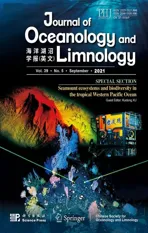A new species of Macandrewia (Demospongiae,Tetractinellida,Macandrewiidae) from a seamount in the Western Pacific Ocean*
2021-10-12LinGONGSweeChengLIMMeiYANGXinzhengLI
Lin GONG ,Swee-Cheng LIM ,Mei YANG ,Xinzheng LI ,,
1 Institute of Oceanology, Chinese Academy of Sciences, Qingdao 266071, China
2 Center for Ocean Mega-Science, Chinese Academy of Sciences, Qingdao 266071, China
3 Laboratory for Marine Biology and Biotechnology, Pilot National Laboratory for Marine Science and Technology (Qingdao),Qingdao 266237, China
4 University of Chinese Academy of Sciences, Beijing 100049, China
5 National University of Singapore, Tropical Marine Science Institute, Singapore 119227, Singapore
Abstract A new species of Macandrewia Gray from a seamount near Yap Trench in the Western Pacific Ocean was described.Macandrewia yapensis sp.nov.is distinct from its congeners by possessing a foliate shape with contorted lamellae,tuberculiform terminations of desmas,and unique size of spicules.This is the third species of Macandrewia described from the Pacific Ocean.In addition,a partial sequence of COI gene was obtained from the new specimen and then it submitted to GenBank.Phylogenetic tree constructed with the partial COI sequences appears to exhibit a more congruent relationship with morphological data of macandrewiid species compared to 28S gene tree.
Keyword:‘Lithistid’ demosponges;morphological and molecular analyses;new species; Macandrewia yapensis sp.nov.
1 INTRODUCTION
The family Macandrewiidae Schrammen,1924 has a rigid skeleton formed by desmas that confers a very strong skeleton and hard texture.It is one of the 13 families of ‘Lithistid’ demosponges (order Tetractinellida Marshall,1876) scattered across suborders Astrophorina Sollas,1887 and Spirophorina Bergquist &Hogg,1969 based on molecular data and the clear morphological synapomorphies are lacking(Morrow and Cárdenas,2015).
At present,Macandrewiidae contains only one genus,MacandrewiaGray,1859,and nine valid species (van Soest et al.,2021) characterized by the presence of dentate phyllotriaenes/discotriaenes,smooth oxeas as ectosomal megascleres,desmas with a triaenose crepis and microxeas as microscleres(Pisera and Lévi,2002).Majority ofMacandrewiaspecies have been described from the Atlantic Ocean(M.azoricaGray,1859;M.clavatella(Schmidt,1870);M.ramosaTopsent,1904;M.robustaTopsent,1904;M.minimaCarvalho &Xavier,2020;andM.schusteraeCarvalho &Xavier,2020).Only two species (M.spinifoliataLévi &Lévi,1983;M.rigidaLévi &Lévi,1989) have been reported from the Pacific Ocean and one species (M.aurisLendenfeld,1907) from the Indian Ocean.
A new species ofMacandrewiawas discovered during a biodiversity survey cruise of seamounts near Yap Trench (Western Pacific Ocean) in December 2014 conducted by the Institute of Oceanology,Chinese Academy of Sciences (IOCAS),using the R/VKexue(Sciencein Chinese).The new spongespecies was collected between the depth of 255–311 m.Morphological examination and molecular analysis of the specimen revealed that it is a new species ofMacandrewia,the third recorded for the Pacific Ocean.
2 MATERIAL AND METHOD
2.1 Sample collection
The sponge specimen was collected by the remotely operated vehicle (ROV)Faxian(Discoveryin Chinese) from a seamount near Yap Trench in the Western Pacific Ocean,and upon collection it was preserved in 75% ethanol and described.The sample was deposited in the Marine Biological Museum of Chinese Academy of Sciences (MBMCAS),Qingdao,China,using accession prefix MBM286832.Ocean Data View software version 5.4.0 (Schlitzer,2020)was used to draw the collection locations (Fig.1).
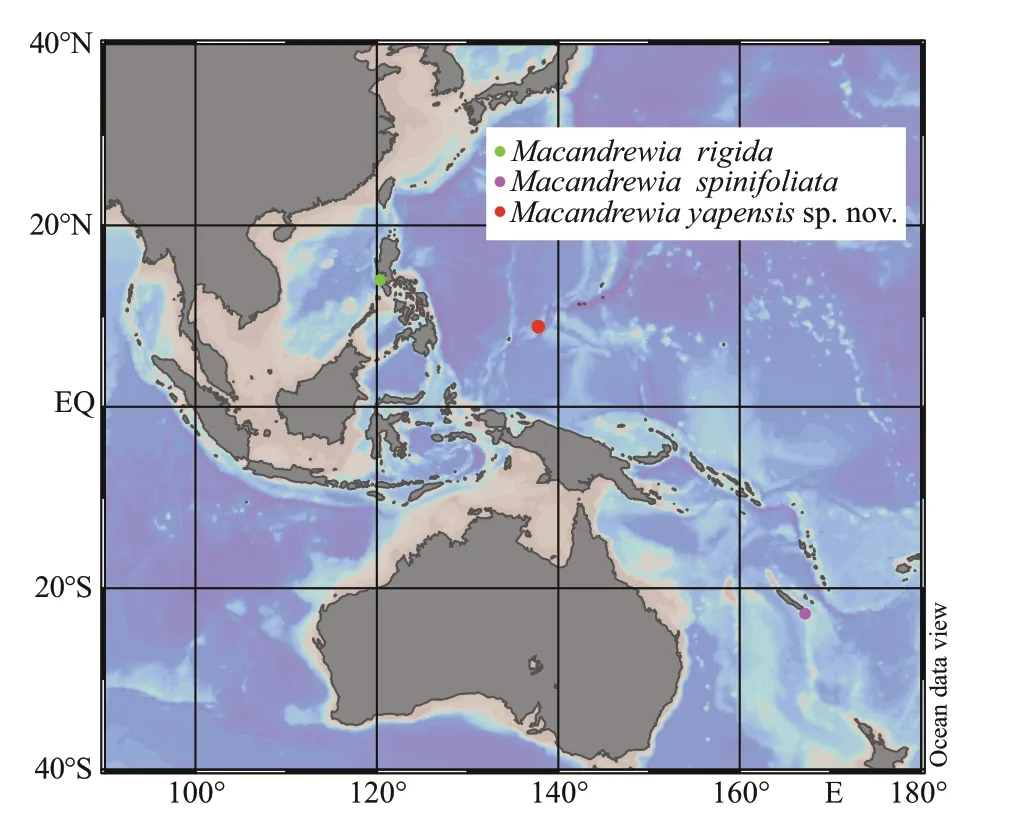
Fig.1 The locations of Macandrewia species found in Pacific Ocean
2.2 Taxonomic analysis
Spicules were isolated by digesting a small piece of sponge tissue using concentrated nitric acid at room temperature overnight.Spicules and skeletal structures were coated with gold and observed under a Hitachi S-3400N scanning electron microscope(SEM).Spicules were measured using an Olympus DSX500 optodigital light microscope (LM).Measurement results are given in Table 1.
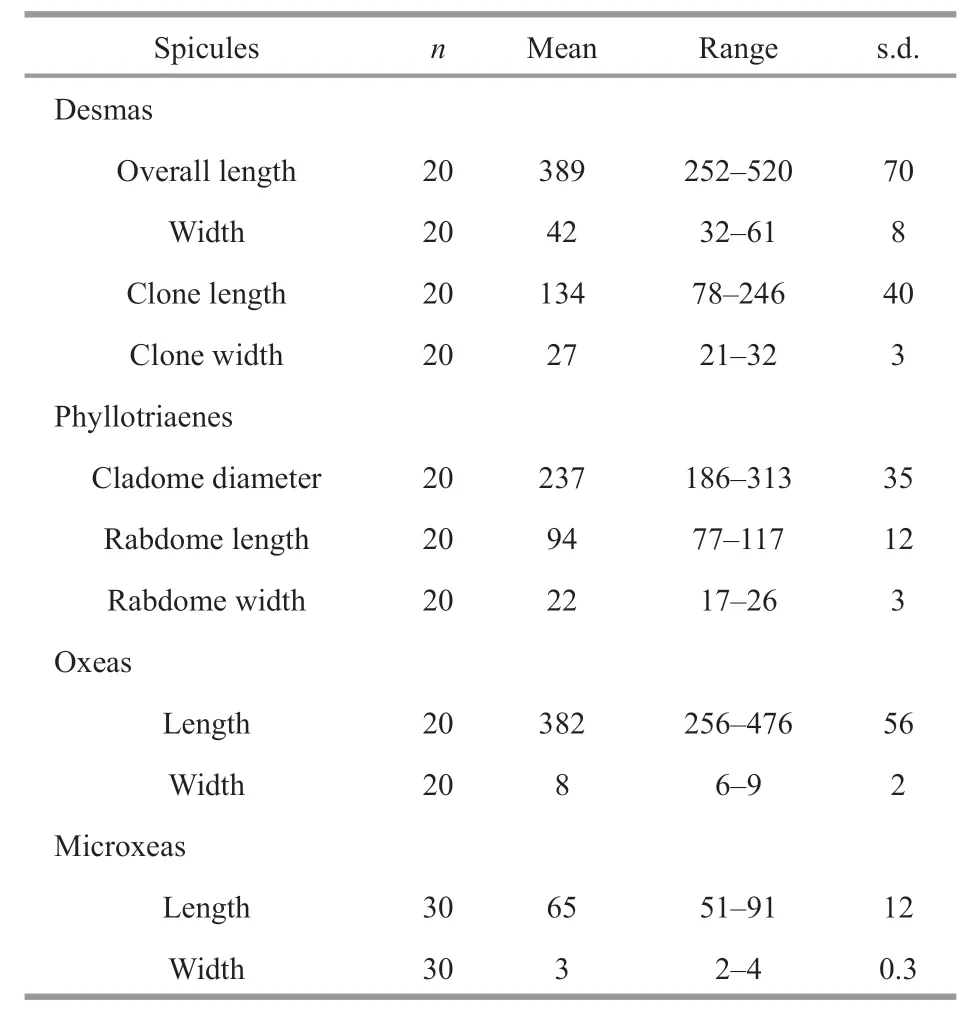
Table 1 Measurements of the spicules of Macandrewia yapensis sp.nov.(holotype MBM286832) (in μm)
2.3 DNA extraction and PCR amplification
Total genomic DNA was extracted from sponge tissue using Tissue DNA Kit (OMEGA Qingdao,China).Polymerase chain reaction (PCR)amplification was carried out in a 25-μL total reaction volume containing 12.5 μL of Premix Taq™ (TaKaRa,Japan),1 μL of each primer,2 μL of template DNA,and 8.5 μL of DNase-free ddH2O.The COI segment was amplified with the degenerated Folmer primers(dgLCO1490 and dgHCO2198) designed by Meyer et al.(2005).Amplification was performed using the following procedure:initial denaturation for 5 min at 94 °C,followed by 30 cycles of denaturation for 30 s at 94 °C,annealing for 40 s at 48 °C,extension for 30 s at 72 °C,and a final extension for 5 min at 72 °C.The COI sequence was submitted to GenBank with an accession number of MW543306.
2.4 Phylogenetic analysis
Specimen was analyzed based on the partial COI gene sequences,by which the phylogenetic position ofMacandrewiayapensissp.nov.in relation with other members of Astrophorina was clarified.There are 64 genera and 15 families in Astrophorina (van Soest et al.,2021) but only 39 genera in 14 families are available from GenBank.We downloaded one sequence from each of the 39 genera to build the phylogenetic tree(Table 2) including the sequences ofMacandrewiaazoricafrom the Azores archipelago and two undescribedMacandrewiasp.from South Africa,andScleritodermaflabelliformewas used as the outgroup for the construction of the phylogenetic tree.
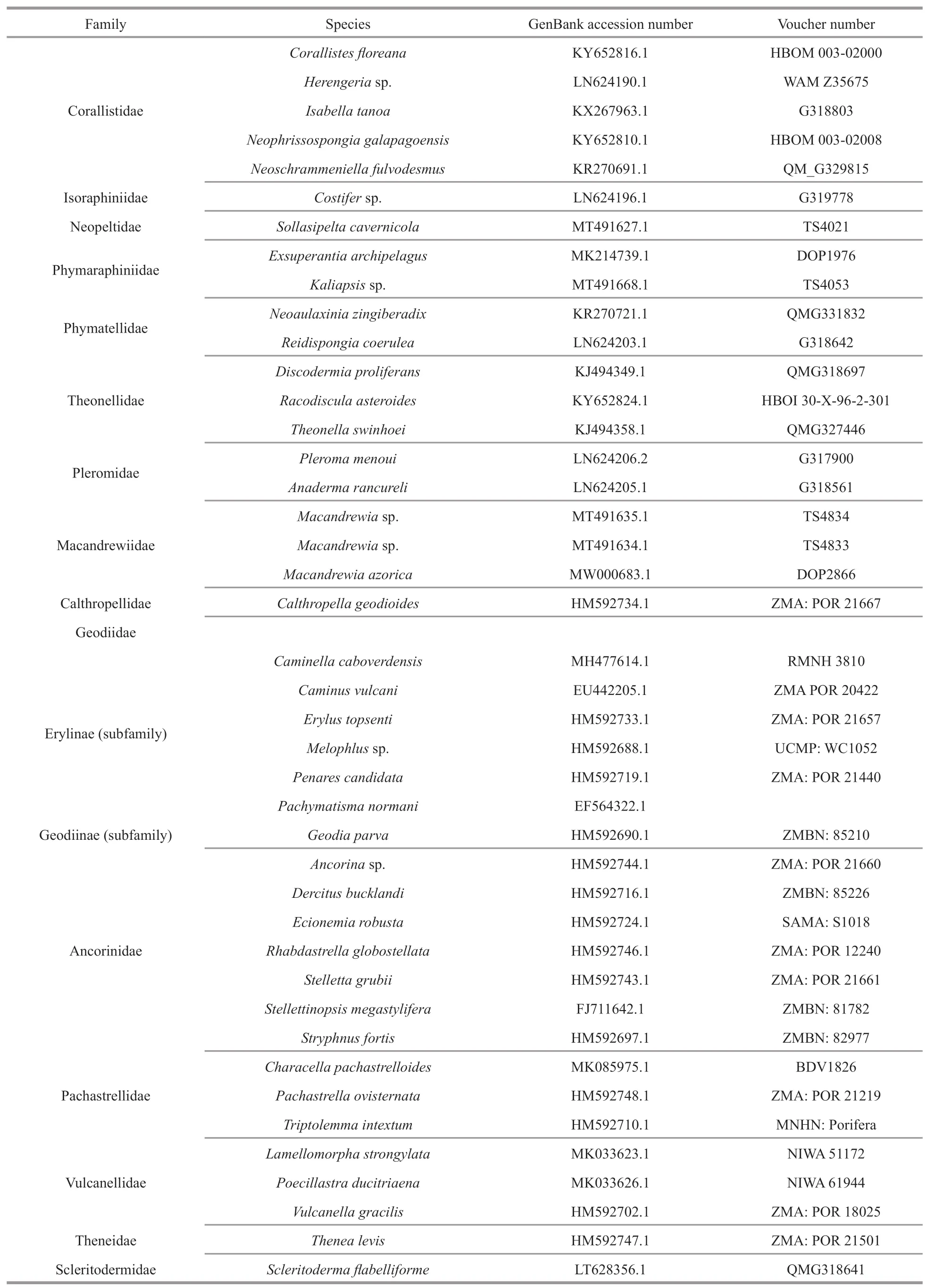
Table 2 Details of specimens and GenBank accession number of COI sequences used in this study
The homologous sequences including 43 sequences of COI genes were aligned using MUSCLE 3.8(Edgar,2004) with default parameters.The best fitting nucleotide substitution model was GTR+I+G as determined by ModelTest 3.7 (Posada and Crandall,1998) with the AIC (Akaike Information Criterion).Maximum likelihood (ML) analysis was carried out in PhyloSuite (Zhang et al.,2020) batch mode using IQ-TREE (Trifinopoulos et al.,2016) plug-in in“Auto”mode with 200 000 ultrafast bootstrap replicates.Bayesian inference (BI) analysis was conducted using Mrbayes 3.2 (Huelsenbeck and Ronquist,2001);Markov Chains were run for 10 million generations,with sampling every 1 000 generations.The first 25% of trees were discarded as burn-in,and the remaining trees were summarized in 50% majority rule consensus tree to estimate the posterior probabilities.Tracer v1.7 (Rambaut et al.,2018) was used to determine the effective sample size(ESS) values for all sampled parameters to ensure that convergence was reached.The trees were edited using iTOL (https://itol.embl.de/) (Letunic and Bork,2019)and the branch lengths were ignored for presentation purpose.
3 TAXONOMY
Class Demospongiae Sollas,1885
Order Tetractinellida Marshall,1876
Suborder Astrophorina Sollas,1887
Family Macandrewiidae Schrammen,1924
GenusMacandrewiaGray,1859
Macandrewiayapensissp.nov.
(Figs.2–4;Table 1)
3.1 Material examined
Holotype:MBM286832,seamount near Yap Trench (8°51ʹN,137°47ʹE),Western Pacific Ocean,22 December 2014,255–311 m,hard bottom with a thin layer of sediment and sand.The entire specimen was stored in 75% ethanol.
3.2 Diagnosis
Macandrewiawith contorted and undulating lamellae;desmas with short,rounded,blunt tubercles.
3.3 Description
Sponge foliate with contorted and undulating lamellae (Fig.2),approximately 7-cm high,9–14-cm wide at the top,lamellae 4-mm thickness.Concave(upper) surface smooth and many small granular bumps is visible by naked eyes,and many microxeas protruded out on the surface shown in SEM (Fig.3a),about 200 μm in diameter.Lower surface is smooth with several little openings invisible by naked eye,about 20–120 μm in diameter (Fig.3b).Texture is stony.Color is brownish in alcohol.
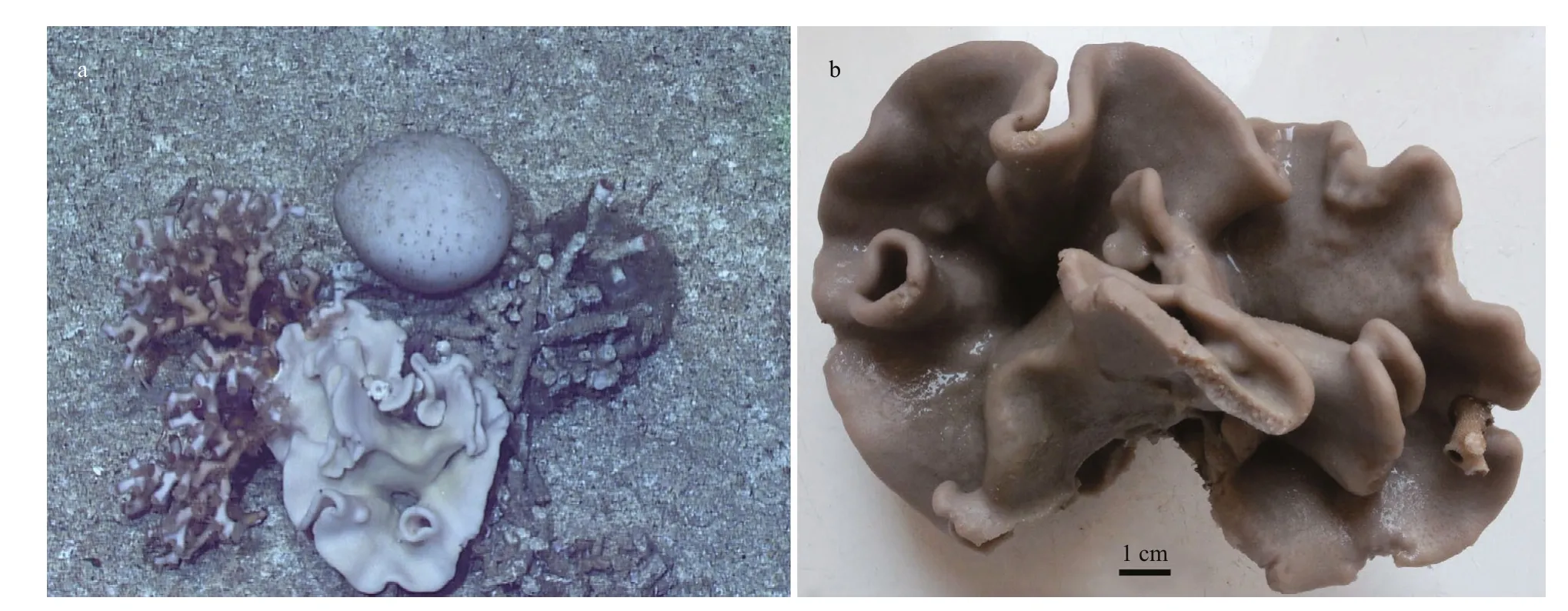
Fig.2 Macandrewia yapensis sp.nov (holotype MBM286832)
Ectosomal skeleton comprises of a layer of overlapping,strongly incised and dentate phyllotriaenes,and abundant microxeas (Fig.3a–b).Choanosome composed of an irregular reticulation of tuberculate and compact desmas accompanied by oxeas (Fig.3c).Desmas (Fig.3c–d) are strongly tuberculated tetraclones with four rays emanating from the center.Most of these desmas have triaenose crepis of which one of the four rays are longer than the rest.
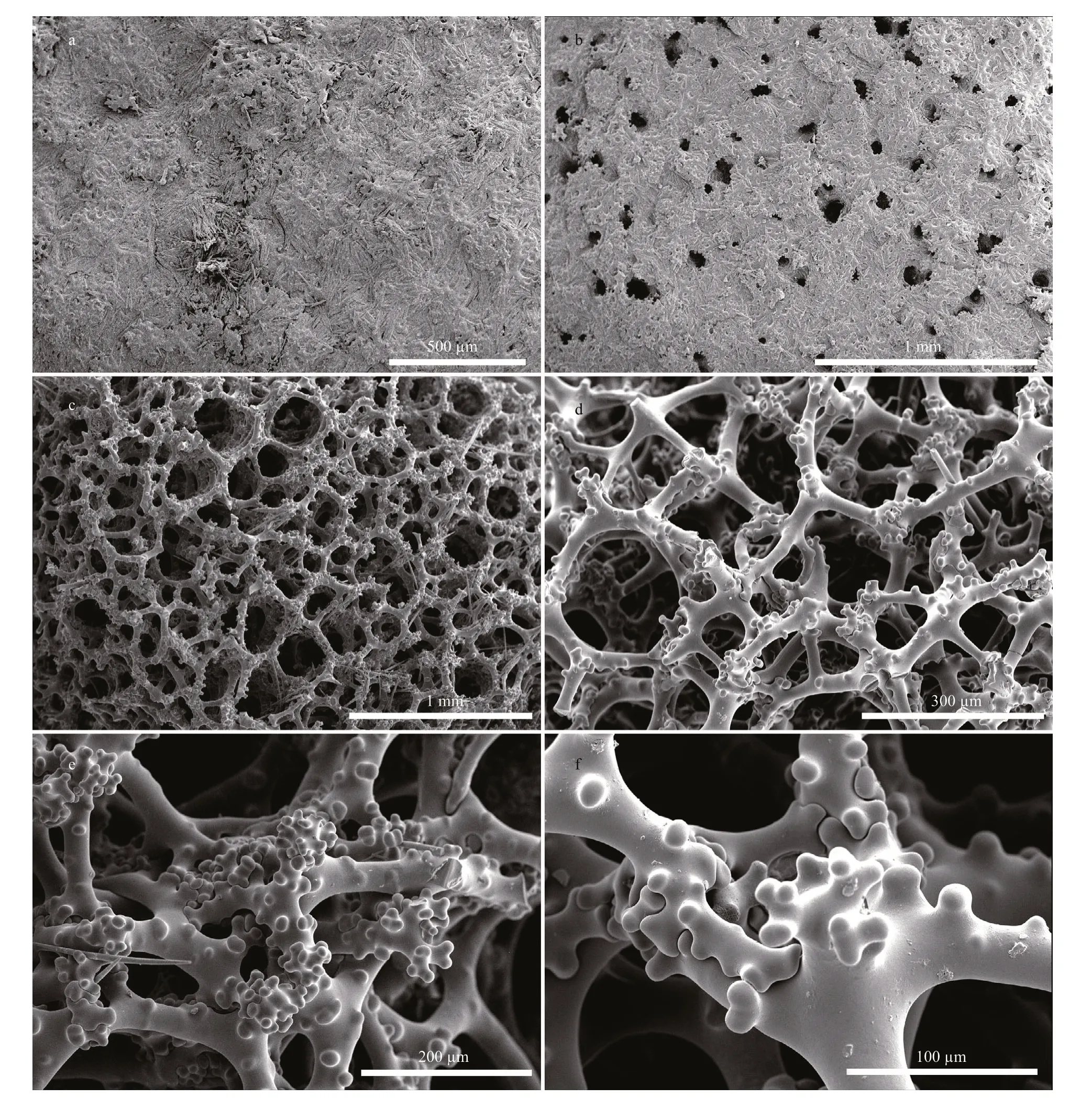
Fig.3 Macandrewia yapensis sp.nov.,holotype MBM286832,the skeleton
Megascleres comprise of phyllotriaenes and desmas.Phyllotriaenes (Fig.4b–c) have short conical rhabdome (77–94–117 μm in length and 17–22–26 μm in width;presented as minimum–mean–maximum,the same afterward),broad dentate,and heavily incised cladome (186–237–313 μm in diameter) with strongly indented edges.Desmas have smooth clones and tubercles (Fig.4c).Desmas overall sizes are 252–389–520 μm×32–42–61 μm in L×W manner,the same afterward.The desma clones,78–134–246 μm×21–27–32 μm in size,are branched at the end into many short,rounded,and blunt tubercles that articulate with each other into complex and tuberculated zygoses (Fig.3e–f).Oxeas (Fig.4a),slightly curved,are 256–382–476 μm×6–8–9 μm.
Microscleres comprise of only microxeas that are curved and their tips are blunt (Fig.4e),51–65–91 μm×2–3–4 μm in size.
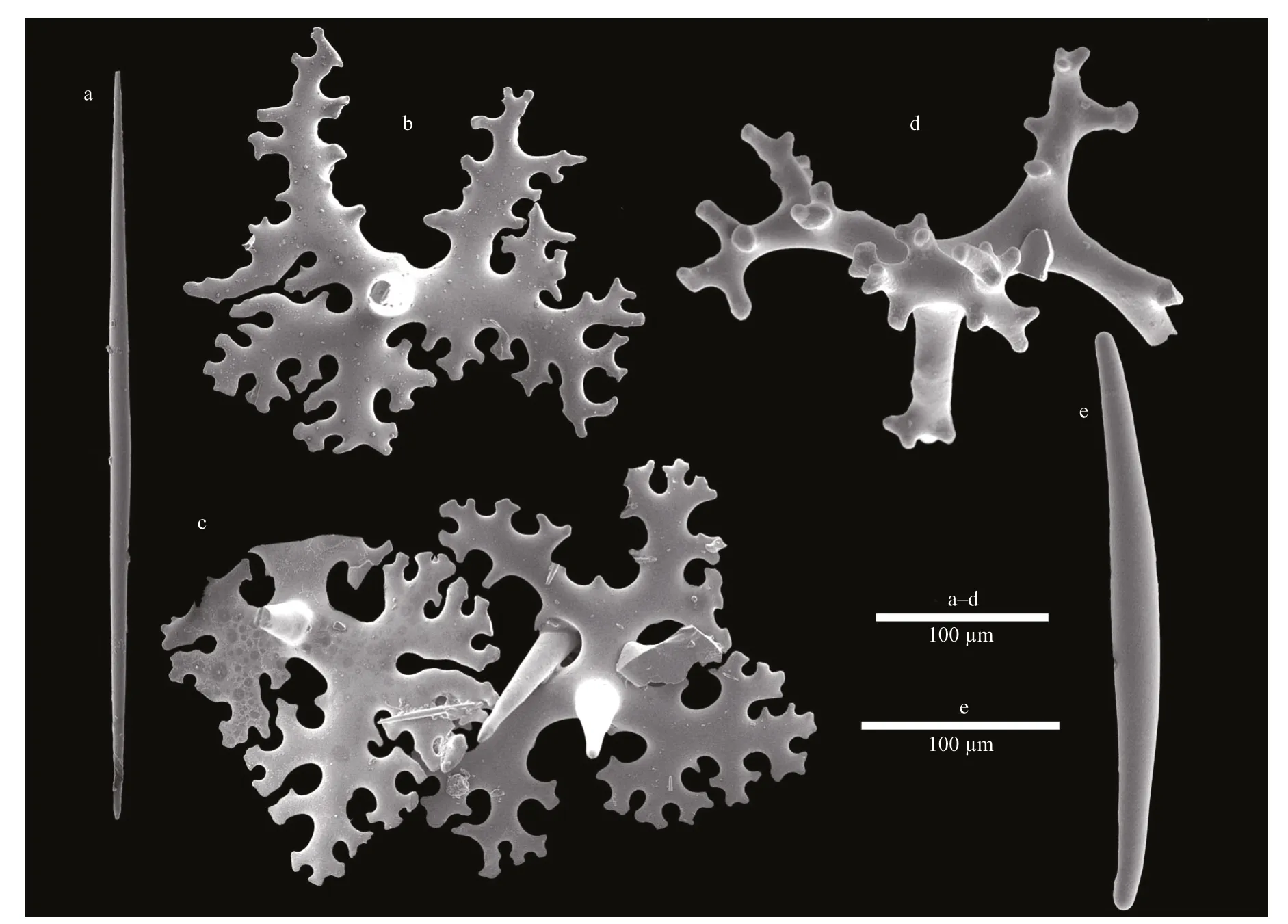
Fig.4 Macandrewia yapensis sp.nov.,holotype MBM286832,spicule complement
3.4 Etymology
Named after the Yap Trench where the specimen was found in proximity.
3.5 Type locality
A seamount near Yap Trench (Western Pacific),255–311 m.
3.6 Substrate and ecology
The sponge was attached to the stony oculinid coral,Cladopsammiasp.,and flanked by a globular species of the sponge family Geodiidae Gray,1867 both sitting on sandy substrate around 255–311 m(Fig.2a).
3.7 Remark
Macandrewiayapensissp.nov.possesses ectosomal phyllotriaenes and desmas with triaenose(rarely monaxial) crepis,smooth oxeas,and microxeas,which is key character of Macandrewiidae.Nine species ofMacandrewiaare known globally and only two previously known in the Pacific Ocean(Table 3).The new species clearly differs from the other two species by its foliate body shape with contorted lamellae,which differed fromM.rigidafrom the Philippines that is a small and branching sponge not more than 45 mm in height and fromM.spinifoliatafrom New Caledonia and New Zealand that is arbuscular branched or nubbin-shaped.In addition,the new species can be differentiated fromM.rigidaby having bigger phyllotriaenes and smaller oxeas,and can be distinguished fromM.spinifoliatawith its much larger desmas.
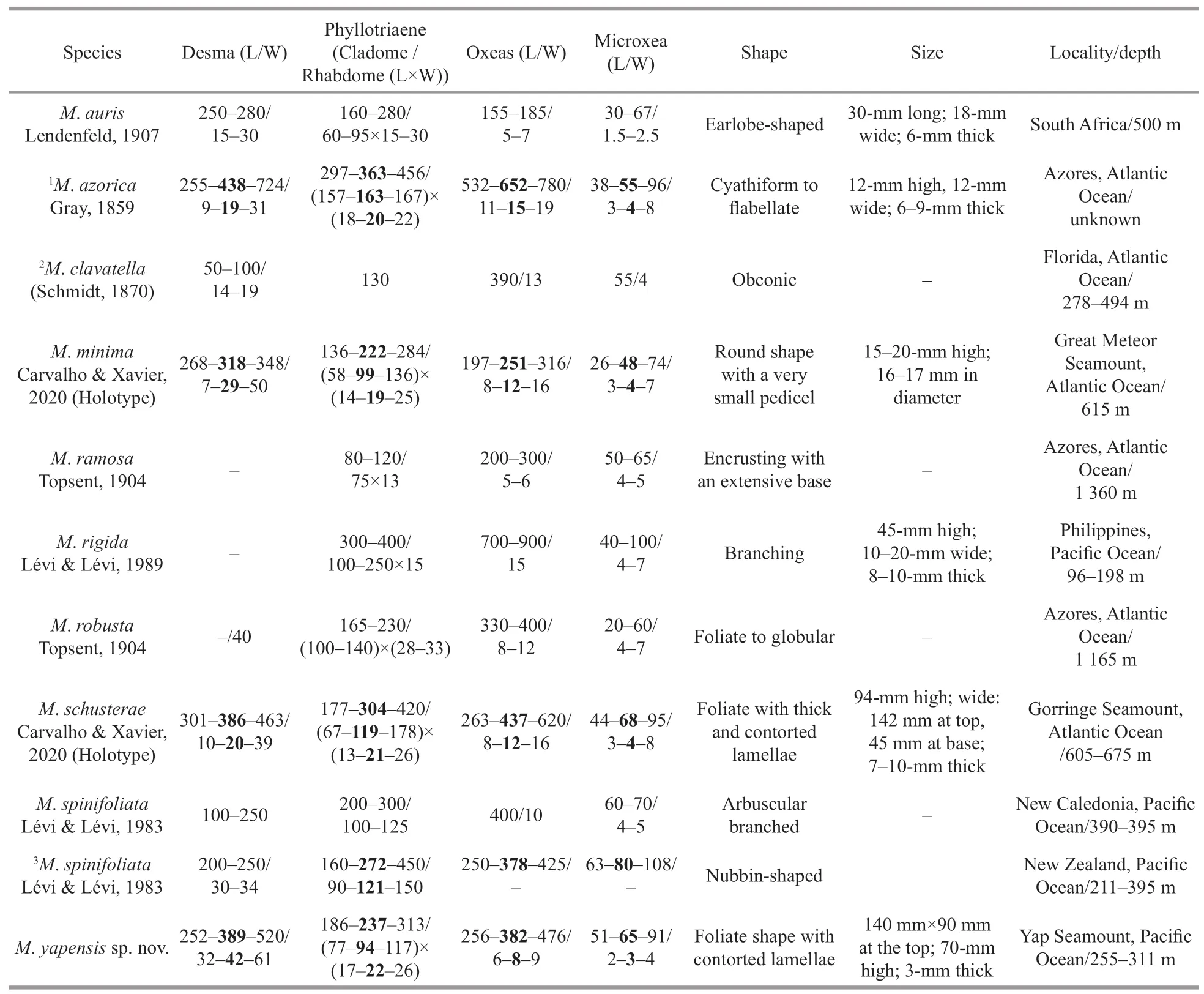
Table 3 Comparative data of Macandrewia species †
It seems that external morphology is the key distinguishing character in the genusMacandrewia:M.auris(earlobe-shaped),M.azorica(cyathiform to flabellate),M.clavatella(obconic),M.minima(globular),M.ramosa(encrusting),M.rigida(branching),M.robusta(foliate to globular),M.schusterae(foliate with contorted lamellas),andM.spinifoliata(branched).OnlyM.schusteraefrom the Atlantic Ocean share the same shape of foliate with thick and contorted lamellas withM.yapensissp.nov.among the congeners.However,M.yapensissp.nov.has tuberculate desma clones whileM.schusteraehas narrow and mostly pointed clones.
The tuberculiform clone tips of desmas may be an important distinguishable character of the new species as well.Macandrewiaazorica,M.robusta,M.schusterae,andM.minimahave short branching clones with blunt tips but the details of desmas ofM.spinifoliata,M.clavatella,M.ramosa,M.rigida,andM.aurisare unknown.The features at the terminal end of clones can be an important character amongMacandrewiaspecies.
3.8 Molecular data
The phylogenetic trees of BI (Fig.5) and ML analyses (Fig.6) are generally congruent.The new species and the three otherMacandrewiaspecies form a clade within the family Macandrewiidae,thus supporting the family assignment,with support values>0.8 for both the ML and BI analyses.
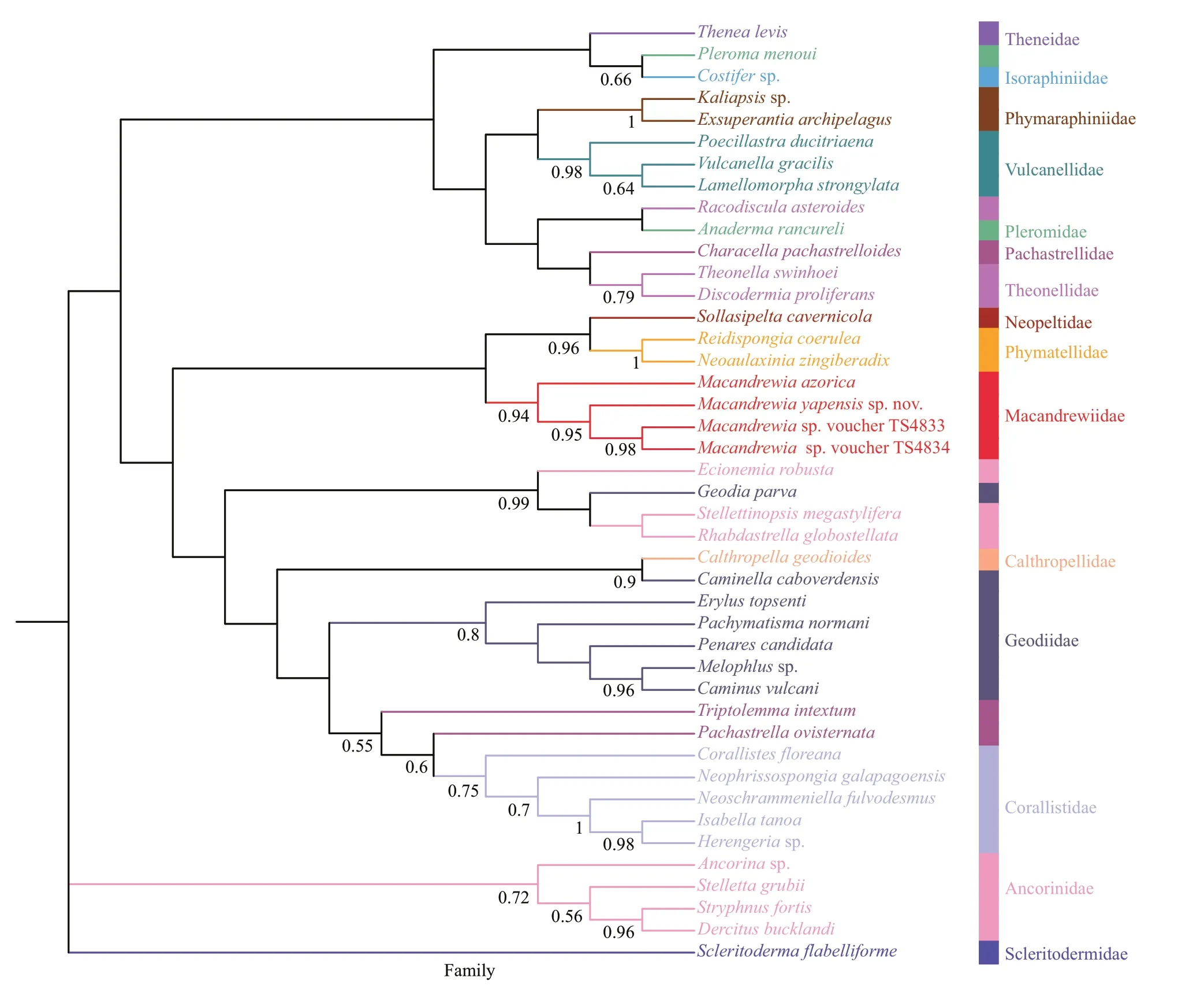
Fig.5 Phylogenetic tree obtained by the Bayesian inference analysis based on COI gene sequences
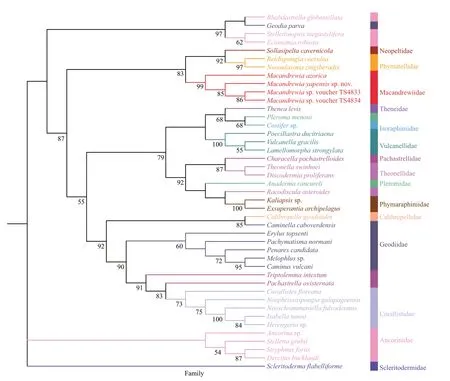
Fig.6 Phylogenetic tree obtained by ML analysis based on COI gene sequences
4 DISCUSSION
The phylogeny of Macandrewiidae based on morphology has been revised for many times (Kelly,2000;Pisera and Lévi,2002;Schuster et al.,2015).In addition,the phylogeny of the family has been explored through molecular approaches recently.Schuster et al.(2015) amplified the first 28S gene sequence ofMacandrewiaspecies (that isM.rigida),and it clustered with the genus ofCalthropellaSollas,1888 (family Calthropellidae Lendenfeld,1907) and the subfamily Erylinae Sollas,1888 with low support values (posterior probabilities (PP) <0.75;bootstrap values (BP) <60%).Schuster et al.(2021) amplified another 28S gene sequence of an undescribedMacandrewiasp.,and it clustered withM.rigidainitially.After that,the two macandrewiid species grouped with the genus ofCalthropellaandCaminellaLendenfeld,1894 (subfamily Erylinae),both of them are non-desma bearing demosponges.The molecular approaches of Macandrewiidae based on 28S gene sequence are not consistent with the morphology approaches.In our phylogenetic trees based on COI sequences,Macandrewiidae is a sister with Neopeltidae and Phymatellidae clades that have desmas as well.It is consistent with the morphology approaches especially the results of Kelly (2000) who thoughtMacandrewiashould belong to Neopeltidae.In our phylogenetic tree,Macandrewiaspecies are not clustered with Neopeltidae species,which is consistent with the idea of Pisera and Lévi (2002) thatMacandrewiabelongs to the family of Macandrewiidae but not Neopeltidae.
Comparing the phylogenetic tree constructed with 28S rDNA gene by Schuster et al.(2015) and Schuster et al.(2021),it seems that the COI gene tree is more congruent to the morphological data due probably to the low variation within the 28S rDNA gene (Schuster et al.,2015).The results of our analysis did not contain all sequences of astrophorins,and more molecular markers and sequences are required in the future to build a more comprehensive tree by which the systematic of astrophorins will be elucidated to a detail.
5 DATA AVAILABILITY STATEMENT
The authors declare that the data supporting the findings of this study are available within the article.The original data of spicule measurements will be available on request from the first author.
6 ACKNOWLEDGMENT
We are grateful to Dr.Kuidong XU (Institute ofOceanology,Chinese Academy of Sciences,Qingdao)for providing the deep-sea sponge specimens.Special thanks to the reviewers for helping us improve the manuscript.
杂志排行
Journal of Oceanology and Limnology的其它文章
- Screening of stable internal reference genes by quantitative real-time PCR in humpback grouper Cromileptes altivelis*
- Morphology and multifractal features of a guyot in specific topographic vicinity in the Caroline Ridge,West Pacific*
- Geochemical characteristics and geological implication of ferromanganese crust from CM6 Seamount of the Caroline Ridge in the Western Pacific*
- Deep-sea coral evidence for dissolved mercury evolution in the deep North Pacific Ocean over the last 700 years*
- Physical oceanography of the Caroline M4 seamount in the tropical Western Pacific Ocean in summer 2017*
- Characteristics and biogeochemical effects of oxygen minimum zones in typical seamount areas,Tropical Western Pacific*
